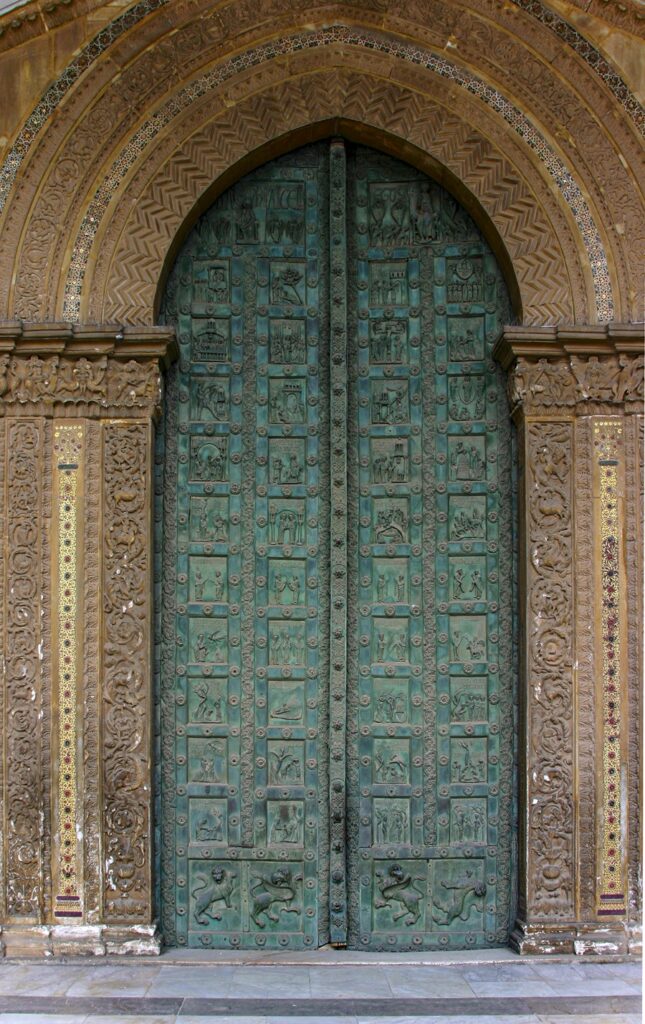The bronze door, commissioned to the artist Bonanno Pisano, was fitted into an ancient portal made of cusped spolia marble, with four pointed rings. It is richly decorated with bands of figurative, geometric and abstract motifs in relief, as well as opus sectile inlays with star-shaped polygons.
Bonanno Pisano had already distinguished himself in Pisa, where he designed the lost bronze doors of Pisa Cathedral. The authorship of the Monreale work is also indicated by the inscription: “Anno / D(omi)ni / MCL / XXXVI / i(n)dictio(n)e / III Bon(n)a / nus ci / vis Pis / anus / me fe / cit”. The bronze door of Monreale, with two doors carved in relief or agemina, was cast and then arrived on site in 1185 (1186 according to the index). In the 44 panels, scenes from the Old Testament are depicted in the five lower registers, with scenes from the New Testament in the five upper registers. Being a kind of Biblia pauperum, the two registers are united by the representation of the twelve prophets. Further panels are found at the bottom with pairs of lions and griffins facing each other and at the top with Mary and Christ in glory. The gate is also known as the Gates of Paradise, and going through it meant reaching the splendour of the Heavenly Jerusalem and being able to enjoy the beauty and magnificence of the mosaics.
Like most of the bronze doors of the time, the one designed by Bonanno was probably rectangular, but was adapted to the doorway with a pointed-arch crowning. This could be the reason why the upper representations of the Madonna in Glory and Christ in Glory are partly hidden by the doorway. The portal was therefore made before the Pisano panels.